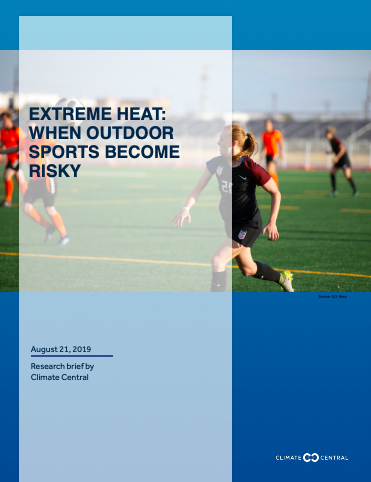Extreme Heat: When outdoor sports become risky
Organization: Climate Central
Year: 2019

The National Weather Service heat index includes a combination of air temperature and the relative humidity to capture what it actually feels like outside (which is usually warmer than what the thermometer is reading). When the heat index reaches 90°F, the NWS advises individuals to use “extreme caution” if exercising or working in the outdoors (and that’s for a heat index calculation that assumes a shady location with a slight breeze).
A Climate Central analysis of 239 locations in the United States shows that 198 cities have experienced an increase in the annual average number of days with heat index temperatures of 90°F or higher over the last four decades, based on a linear regression analysis. These extreme heat days are now comprising much of the summer for many cities in the South and Southwest, while areas of the country that had relatively few summer days reach the 90°F heat index in the past are now experiencing weeks of them. A “danger” day occurs when the combination of heat and humidity makes it feel like it’s 105°F or hotter. Nearly a dozen U.S. cities experienced an increase of at least 4 danger days on average since 1979.